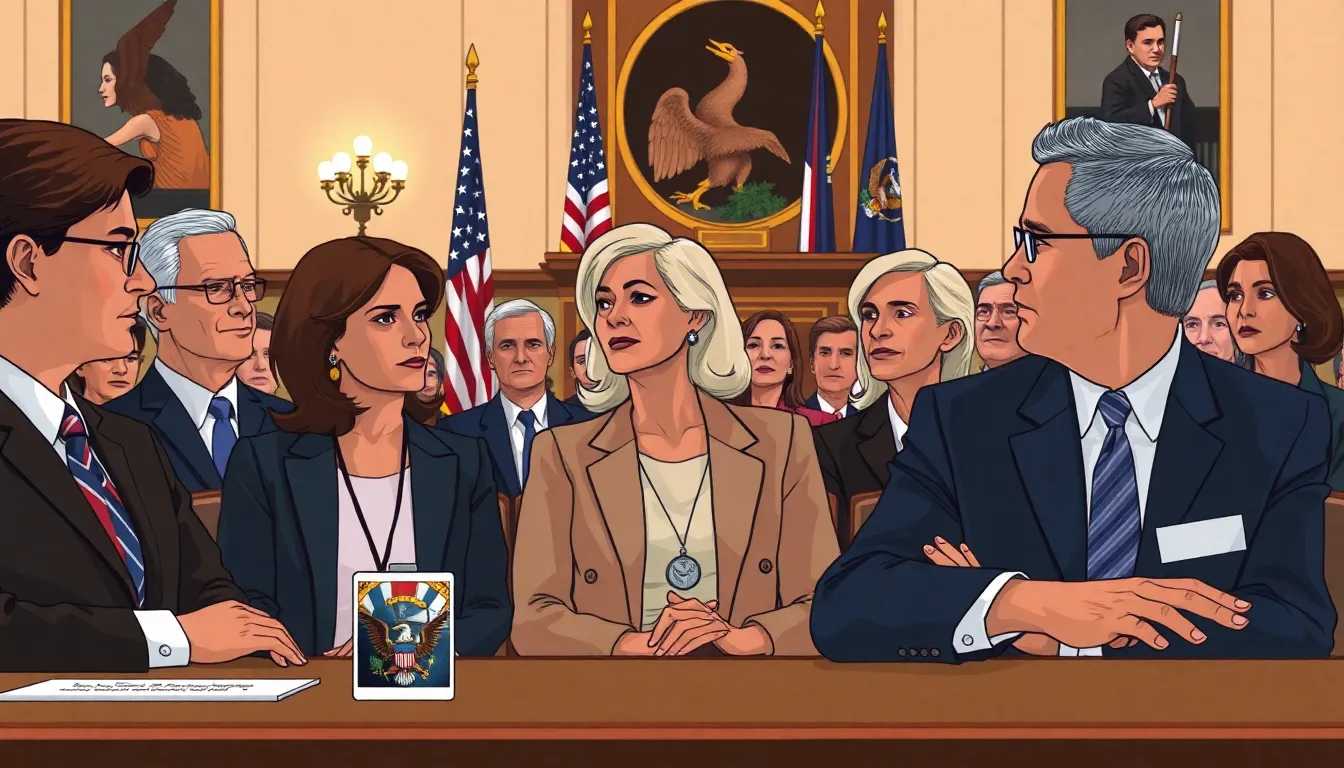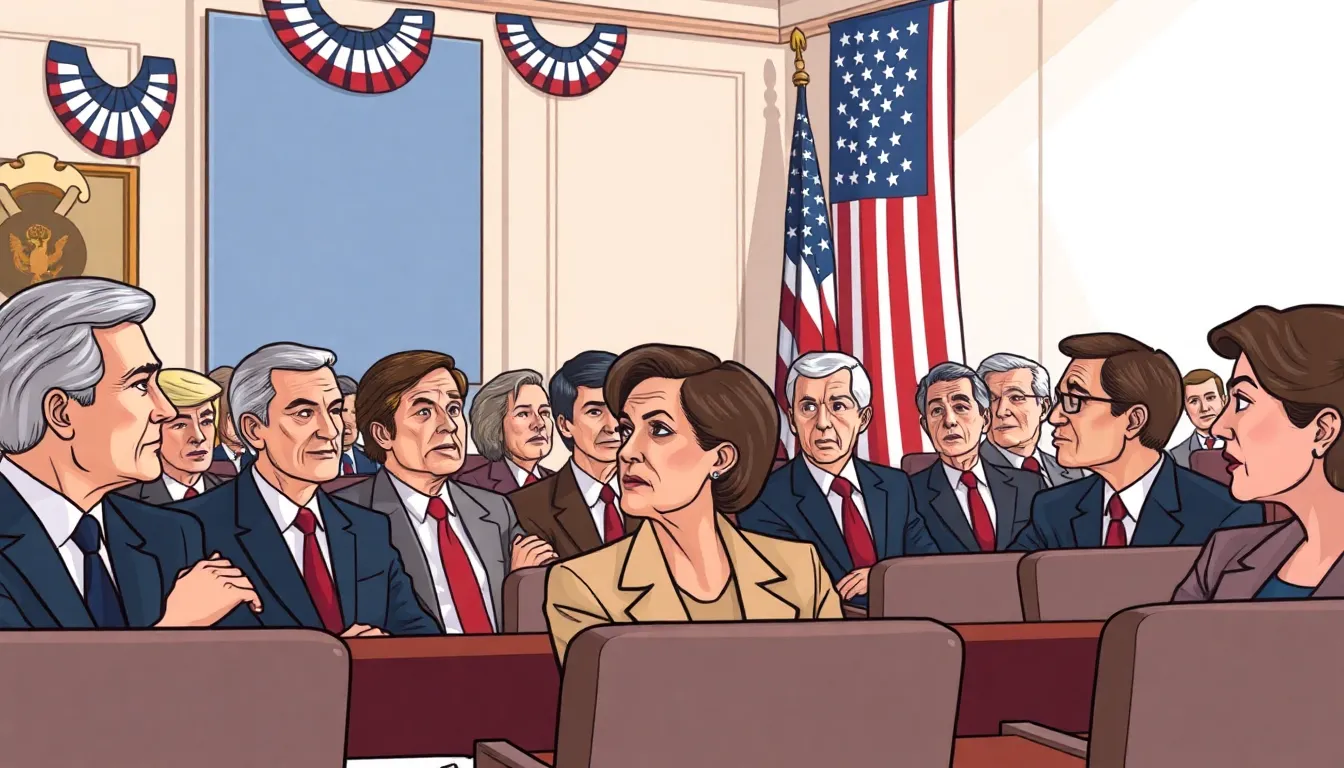As the political world buzzes with anticipation, the question on everyone’s lips is: when will Trump’s cabinet be confirmed? With a lineup that could rival a reality show, the stakes are high and the drama is palpable. From seasoned veterans to fresh faces, each nominee brings their own flavor to the table.
Navigating the confirmation process is like trying to find a parking spot at a crowded mall during the holidays. It’s chaotic, unpredictable, and everyone’s got an opinion. But don’t worry, the timeline is clearer than a well-polished campaign slogan. Buckle up as we dive into the ins and outs of this political spectacle, breaking down what to expect and when to expect it.
Table of Contents
ToggleOverview of Trump’s Cabinet Confirmation Process
The confirmation process for Trump’s cabinet involves several crucial steps. Each nominee must undergo a hearing before the Senate committees relevant to their designated departments. After the hearings, the committees vote on whether to recommend each nominee to the full Senate.
Senate confirmation requires a simple majority for approval. Typically, this process occurs swiftly yet can be delayed by various factors, such as political disagreements or public pushback. For instance, unexpected controversies surrounding a nominee can lead to postponed votes and prolonged scrutiny.
Nominees often face intense media scrutiny during this period. Public interest in the confirmation process can elevate debates about qualifications and past actions. Certain nominees may encounter significant opposition, resulting in additional time for discussion and analysis.
Various timelines apply to the confirmation process. Generally, confirmations happen within the first few months of the administration, but delays can arise due to unforeseen circumstances. Additionally, different nominees may experience varied timelines based on their individual situations.
This dynamic environment creates unpredictability. Observers note that while some nominees receive quick approval, others may take longer to secure confirmation. Overall, the complexity of the process reflects the high stakes involved for the administration and the ongoing balance of power within the Senate.
Timeline of Key Events

The timeline for confirming Trump’s cabinet reveals critical steps in the process. Each event significantly impacts the overall confirmation outcome.
Nomination Announcements
Nomination announcements mark the beginning of the confirmation journey. Typically, the President unveils nominees shortly after taking office. Each nominee undergoes scrutiny, attracting public and media attention. An early selection of qualified individuals contributes to smoother confirmations. Delays can arise from opposition or unexpected issues tied to a nominee’s background. Public interest remains high as individuals analyze candidates’ qualifications.
Senate Confirmation Hearings
Senate confirmation hearings follow nomination announcements. During these sessions, Senators evaluate each nominee’s qualifications and past actions. Questions often touch on policies and responsibilities associated with the position. Witness testimonies might include experts providing perspective on a nominee’s suitability. Timeliness varies; some hearings occur days after nominations while others may be delayed by logistical challenges. Media coverage enhances public engagement, shedding light on potential controversies.
Final Votes
Final votes represent the culmination of the confirmation process. A simple majority is required for approval, solidifying each nominee’s position in the cabinet. Votes typically occur in the days following hearings, but political dynamics can alter this schedule. Senators deliberate on party lines or bipartisan agreements impacting the final decision. The outcome reflects the existing power balance within the Senate. Public reaction to these votes often shapes future political narratives and strategies.
Factors Influencing Confirmation Timing
Confirmation timing for Trump’s cabinet relies on several critical factors. These factors include the political climate and party majority in the Senate.
Political Climate
Political climate shapes the confirmation process significantly. Current events, policy debates, and public sentiment can affect the speed and outcome of confirmation votes. Public protests or support for certain nominees often draw attention and sway Senate opinions. If divisive issues arise, Senators may delay hearings or votes. Media coverage amplifies issues, creating pressure on Senators to respond to constituents’ concerns. As a result, nominees facing scrutiny may experience longer confirmation timelines.
Party Majority in the Senate
Party majority in the Senate greatly impacts confirmation timing. A simple majority enables quicker approvals, while a closely contested Senate may introduce delays. When the majority party supports nominees, the process becomes smoother and faster. Conversely, if the opposite party has significant influence, they might push for lengthy questions and extended debates. Voter narratives can also shift based on the perceived alignment of nominees with party values, complicating the confirmation timeline further.
Implications of Delays
Delays in confirming Trump’s cabinet can have significant implications for governance and policy-making. Uncertainty in leadership disrupts the administration’s ability to implement its agenda efficiently. Critical positions often remain vacant, which can hinder decision-making and responsiveness to emerging issues.
Political dynamics play a vital role in shaping these delays. If nominees face intense scrutiny or face controversies, the Senate may require additional time for consideration. Extended debates can arise, especially if votes are influenced by shifting public sentiments and protests, leading to a fractured political atmosphere.
Economic impacts may also accompany these delays. Businesses often seek clarity in regulatory environments, and prolonged uncertainty can stall investment decisions. Potential volatility in markets may result from concerns over incomplete appointments.
Public confidence in government institutions can diminish as delays persist. Citizens may see slow confirmation processes as a lack of commitment from their elected representatives. Dissatisfaction could influence public discourse and shift political narratives, impacting future elections and policy initiatives.
Considering the Democrat-majority Senate, strategic maneuvering becomes essential. If Democrats utilize their majority effectively, they may expedite confirmations and minimize backlash. In contrast, close votes can exacerbate delays, complicating party negotiations and fostering discord.
These nuances highlight the complexity of the confirmation timeline. Political climates, public opinion, and party dynamics intersect, making every delay impactful. Understanding these implications is crucial for gauging the broader effects on the administration’s ability to fulfill its objectives.
The confirmation of Trump’s cabinet is a pivotal moment that can significantly influence his administration’s effectiveness. As the Senate navigates the complexities of political dynamics and public sentiment, the timeline for confirmations remains uncertain. Each nominee’s evaluation will be scrutinized, impacting not just individual positions but also the overall governance strategy. The interplay between the Senate’s majority and the political climate will ultimately determine how swiftly these confirmations can occur. Stakeholders and the public alike will be watching closely, as delays could have lasting implications on policy-making and public trust in government.

